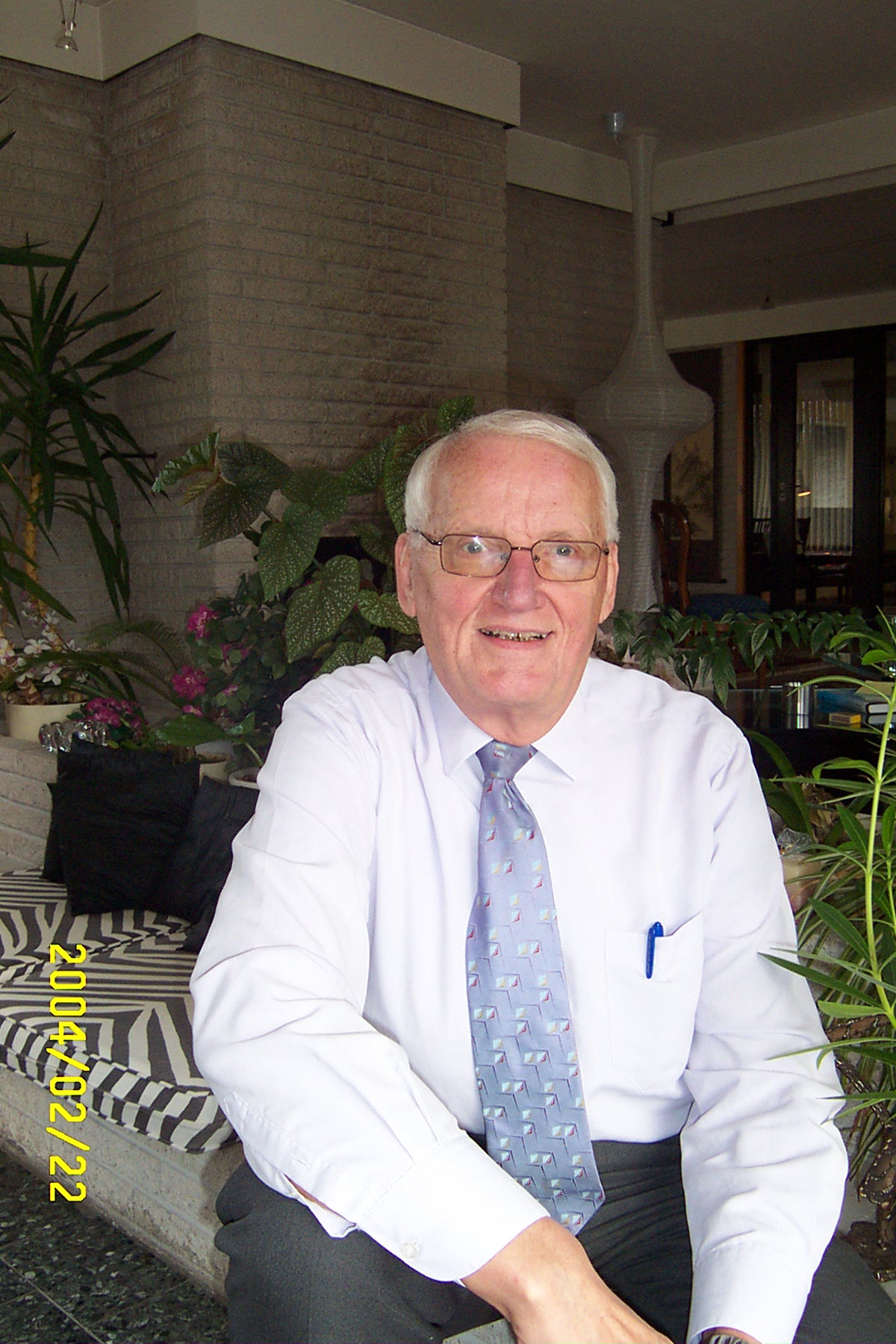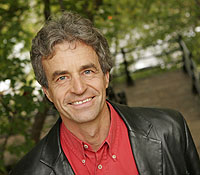| |
 Ecological Modelling for Ecosystem Sustainability in the context of Global Change
Ecological Modelling for Ecosystem Sustainability in the context of Global Change
|
| |
Keynote speakers
|
top
|
| |
| |
| |
 |
|
Philippe Ciais
Institut Pierre Simon Laplace,
Gif-sur-Yvette, France
Recent trends in CO2 emissions and sinks
The latest carbon dioxide emissions continue to track the high end of a range of emission
scenarios, expanding the gap between current trends and the pathways required to keep climate change below latest carbon dioxide emissions continue to track the high end of a range of emission
scenarios, expanding the gap between current trends and the pathways required to keep climate change below
2°C.
more...
|
|

| |
Brian D. Fath
Biology Department, Towson University,
Towson, USA
Conceptual models of ecological dynamics : indicators of regime change
Indicating, measuring, and maintaining system complexity is a paramount challenge which could help us move
beyond subjective and descriptive approaches to sustainability. measuring, and maintaining system complexity is a paramount challenge which could help us move
beyond subjective and descriptive approaches to sustainability.
more...
|
|
| |
| |
| |
 |
|
Sven E. Jørgensen
University of Copenhagen,
Copenhagen, Denmark
The development of a carbon cycling model for the Danish island of Samsø based on renewable energy
Oil and natural gas resources will be depleted within the next 50-75 years. This will present an enormous challenge to
industrialized countries where we will have to change our societies in a sustainable direction and convert and adapt our lives into a fossil free existence. and natural gas resources will be depleted within the next 50-75 years. This will present an enormous challenge to
industrialized countries where we will have to change our societies in a sustainable direction and convert and adapt our lives into a fossil free existence.
more...
|
|
 |
|
Pierre Legendre
Département de sciences biologiques,
Université de Montréal, Montréal, Canada
Spatial eigenfunction analysis : new developments
The presentation will focus on the most recent developments in spatial eigenfunction analysis that are used to model
multiscale spatial structures in univariate or multivariate response data. presentation will focus on the most recent developments in spatial eigenfunction analysis that are used to model
multiscale spatial structures in univariate or multivariate response data.
more...
|
|
| |
| |
| |
 |
|
Tarzan Legovic
Division of Marine and Environmental Research
R. Bokovic Institute, Zagreb, Croatia
Principles concerning maximum sustainable yield in ecosystems
 Since the Johannesburg Implementation Plan, 2002, a number of legal documents started advocating the maximum sustainable
yield (MSY) as a goal of fishery. The most recent is the EU Green Paper on Reform of the Common Fishery Policy (April 22, 2009) which advocates : "adoption of MSY as a management principle". Since the Johannesburg Implementation Plan, 2002, a number of legal documents started advocating the maximum sustainable
yield (MSY) as a goal of fishery. The most recent is the EU Green Paper on Reform of the Common Fishery Policy (April 22, 2009) which advocates : "adoption of MSY as a management principle".
more...
|
|
 |
|
Michel Loreau
Centre for Biodiversity Theory and Modelling, Experimental Ecology Station of the CNRS in Moulis, France
Disentangling and predicting the effects of biodiversity on ecosystem stability
The relationship between the diversity and stability of ecosystems has been highly contentious over the past century.
Recent work shows that biodiversity tends to stabilise aggregate ecosystem processes, while at the same time destabilising component populations. relationship between the diversity and stability of ecosystems has been highly contentious over the past century.
Recent work shows that biodiversity tends to stabilise aggregate ecosystem processes, while at the same time destabilising component populations.
more...
|
|
| |
| |
| |
 |
|
William J. Mitsch
Everglades Wetland Research Park, Florida Gulf Coast University, Naples, Florida, USA
Carbon, wetlands, and climate change : a global perspective
We show by dynamic modeling of carbon flux results from seven detailed studies by us of temperate and tropical wetlands
and from 14 other wetland studies by others that methane emissions become unimportant compared to carbon sequestration in wetlands. show by dynamic modeling of carbon flux results from seven detailed studies by us of temperate and tropical wetlands
and from 14 other wetland studies by others that methane emissions become unimportant compared to carbon sequestration in wetlands.
more...
|
|
 |
|
Harald Sverdrup
Chemical Engineering, Lund University,
Lund, Sweden
Developing an approach for Sweden and France for setting critical loads based on biodiversity in a time when management, pollution and
climate change
The integrated dynamic ecosystem model ForSAFE-VEG were used to estimate critical loads for nitrogen using different
chemical and biological criteria, and attempting to account for possible effects of climate change. integrated dynamic ecosystem model ForSAFE-VEG were used to estimate critical loads for nitrogen using different
chemical and biological criteria, and attempting to account for possible effects of climate change.
more...
|
|
|
|
Conference topics |
top |
| |
 |
| |
Modelling in the context of Global Change |
|
From individuals to ecosystems |
| |
1.1 climate changes : IPCC scenarios climate changes : IPCC scenarios
1.2 quantifying gas emissions from agrosystems and ecosystems quantifying gas emissions from agrosystems and ecosystems
1.3 regional impacts of climate change regional impacts of climate change
1.4 sustainable management of natural resources sustainable management of natural resources
1.5 changes in eco-hydrology changes in eco-hydrology
1.6 impact of climate change on agrosystems, food production and food security impact of climate change on agrosystems, food production and food security
1.7 linking ecology, economy and sociology linking ecology, economy and sociology
|
|
4.1 individual-based and agent based models individual-based and agent based models
4.2 population dynamic models population dynamic models
4.3 behavioral modelling behavioral modelling
4.4 modelling in genetics modelling in genetics
4.5 recent advances and new challenges in species distribution modelling recent advances and new challenges in species distribution modelling
4.6 modelling for large scale ecology and macroecology modelling for large scale ecology and macroecology
4.7 modelling for management and conservation of biodiversity modelling for management and conservation of biodiversity
|
| |
 |
Ecosystem functioning
2.1 ecosystem networks ecosystem networks
2.2 monitoring and assessment for ecosystem dynamics monitoring and assessment for ecosystem dynamics
2.3 ecological indicators ecological indicators
2.4 linking structure and function of ecosystems linking structure and function of ecosystems
2.5 ecosystem services ecosystem services
2.6 ecological engineering ecological engineering
Biogeochemistry and ecotoxicology
3.1 biogeochemical cycles biogeochemical cycles
3.2 ecotoxicology ecotoxicology
3.3 contaminant transportation contaminant transportation
3.4 environmental risk assessment environmental risk assessment
|
|
New tools and technical challenges for modelling in ecology
5.1 model-data fusion model-data fusion
5.2 sensitivity analysis sensitivity analysis
5.3 time series analysis time series analysis
5.4 remote sensing remote sensing
5.5 upscaling-downscaling upscaling-downscaling
5.6 matrix population models matrix population models
5.7 tools for end-users tools for end-users
|
|
|
Special sessions |
top |
| |
 |
| |
Wednesday October 30th
 14h-18h 14h-18h
 room n°1 room n°1 |
|
Matrix population models : current challenges in theory and applications
Dmitrii O. Logofet and Christelle Lopes
|
|
| |
| |
Matrix models have long become a convenient tool to model the dynamics of a single-species, structured population. The population structure
(in a relevant classification of "stages") and the individual life cycle (in the same classification) are typically known from case studies, while the matrix pattern is firmly
associated with the life cycle graph. When calibrated from data, the matrix produces a number of qualitative characteristics that provide for comparative field studies or/and
theoretical research. As a function of data type, this kind of model calls for both new problems in matrix theory to be solved and new IT tools to be applied. The spectrum of
these topics is illustrated by speakers of the Session both in the linear and nonlinear formalisms.
|
| |
| |
| |
Thursday October 31st
 9h-13h 9h-13h
 room n°1 room n°1
|
|
Behavior monitoring in ecological modeling : theoretical and practical aspects in ecosystem stress and disturbance assessments
Tae-Soo Chon and Zongming Ren
|
|
| |
| |
Response behavior of indicator species has garnered a special attention in addressing ecological states under disturbed/stressful conditions,
filling the gap between macro-scale (e.g., community structure) and micro-scale (e.g., molecular response) measurements effectively. Detection of response behaviors has various
advantages such as in situ monitoring, econom! y and efficiency in measurement, and minimization of environmental damages. Especially behavioral monitoring is useful for early warning
through continuous real-time monitoring. However, movement data are complex to analyze: highly variable (e.g., individual variation) and sensitive to various sources of noise.
Along with rapid development of computational methods and interfacing techniques, considerable advancements have been achieved in behavior monitoring regarding efficiency and objectivity
in assessment. Recent development of computational methods, including dynamic models, stochastic processes, informatics, statistical approaches, and other related models will be discussed.
Information on monitoring methods will be further exchanged regarding prediction, assessment, and evaluation of ecosystem states across different time and space scales in this session.
|
|
|
Workshops |
top |
| |
 |
| |
Wednesday October 30th
 15h-18h 15h-18h
 room n°2 room n°2
|
|
Introduction to the CASiMiR fuzzy modelling system for the simulation of aquatic habitats and floodplain vegetation
Ans Mouton
|
|
| |
| |
The use of physical habitat models for the investigation of minimum flow requirements is well-established. But habitat models have
advanced considerably, allowing for expanded applications such as the planning of morphological improvements, impact studies of river engineering measures and ecological operation
of dams. Particularly in this context, the altered flow regime and the impact on the waters accompanying vegetation play an important role. The CASiMiR model system has been
continuously developed since the early 1990s and provides modules for the investigation of aquatic habitats and floodplains as major elements of riparian river systems.
Major features of the system are :
 1. 1. Processing imprecise expert knowledge about aquatic
habitat requirements (fish, macroinvertebrates, macrophytes) using a fuzzy rule Processing imprecise expert knowledge about aquatic
habitat requirements (fish, macroinvertebrates, macrophytes) using a fuzzy rule
 based model and based model and
 2. 2. Implementing floodplain a vegetation model which is
based on a dynamic approach allowing for consideration of succession processes. Implementing floodplain a vegetation model which is
based on a dynamic approach allowing for consideration of succession processes.
The course provides in addition to the theoretical background, an introduction to the functions and operation of the CASiMiR software. Case studies and an approach to derive fuzzy
rules from data will be presented.
The software can be downloaded free of charge at www.casimir-software.de
This workshop presents fundamentals of habitat modelling and the approaches used in CASiMiR to describe relations between morphologic, hydraulic and biological parameters.
Participants have the opportunity to work with the models and learn about the main features. Particular attention is paid to the modelling of habitats for fish, benthic invertebrates
and floodplain vegetation. The underlying fuzzy logic method for the description of aquatic habitats, as well as the advantages over the conventional preference approach
(e.g. PHABSIM), are addressed. The succession approach of the vegetation model is explained in detail.
Suggested schedule
| |
15:00-15:45 |
Introduction to knowledge-based aquatic species distribution modelling with CASiMiR
(Dr. Jeff Tuthan, Schneider & Jorde Ecological Engineering) |
| |
| |
15:45-16:30 |
Case studies and applications of CASiMiR (Dr. Jeff Tuthan, SJE; Prof. Ans Mouton, Research Institute
for Nature and Forest/Ghent University) |
| |
| |
16:45-18:00 |
Floodplain vegetation modelling with CASiMiR Vegetation (Dr. Gregory Egger - Dr. Emilio Politi,
Umweltbüro Klagenfurt) |
|
|

|
|













